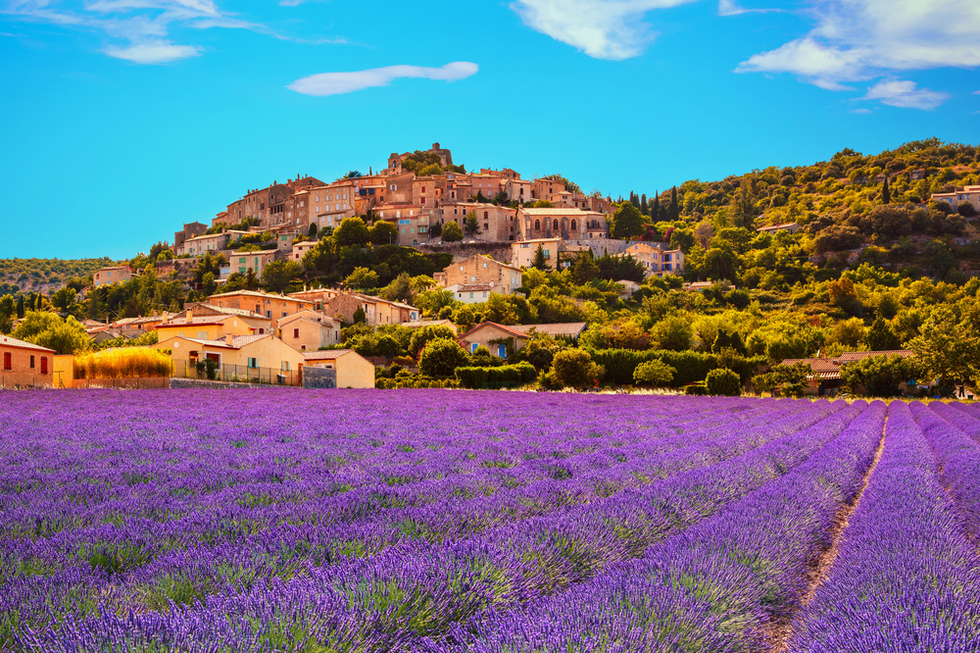The ancient Greeks left their vines, the Romans their monuments, but it was the 19th-century Impressionists who most shaped the romance of Provence today. Cézanne, Gauguin, Chagall, and countless others were drawn to the unique light and vibrant spectrum brought forth by what van Gogh called “the transparency of the air.” Modern-day visitors will delight in the region’s culture, colors, and world-class museums. And from the markets of the Luberon to the street-eats of buzzing Marseille, they will certainly dine well, too.
Provence, perhaps more than any other part of France, blends past and present with an impassioned pride. It has its own language and customs, and some of its festivals go back to medieval times. The region is bounded on the north by the Dauphine River, on the west by the Rhône, on the east by the Alps, and on the south by the Mediterranean. Provence’s topography varies starkly, from the Camargue’s salt marshes to the Lubéron’s lavender fields, and on to the vertiginous Alpine cliffs of Haute Provence.
That fabled real estate of Provence known as the French Riviera, also called the Côte d’Azur, ribbons for 200km (125 miles) along the sun-kissed Mediterranean. The region has long attracted artists and jetsetters alike with its clear skies, blue waters, and carefree cafe culture. Chic, sassy, and incredibly sexy, the Riviera can be explored by bus, train, boat, bike, Segway, electric car, or in a dozen novel ways.
A trail of modern artists captivated by the region’s light and setting has left a rich heritage: Matisse at Vence, Cocteau at Villefranche, Léger at Biot, Renoir at Cagnes, and Picasso at Antibes and seemingly everywhere in between. The finest collection of modern artworks is at the Foundation Maeght in St-Paul-de-Vence. Museums dedicated to Jean Cocteau in Menton and Pierre Bonnard near Cannes also offer a vivid introduction to the Riviera’s storied art scene.
A century ago, winter and spring were considered high season on the Riviera. In recent decades, July and August have become the most crowded months, and reservations are imperative. The region basks in more than 300 days of sun per year, and even December and January are often pleasant and sunny.
The ribbonlike corniche roads stretch across the western Riviera from Nice to Menton are scenic stars in scores of films including Cary Grant’s “To Catch a Thief” and Robert de Niro’s “Ronin,” as well as the 2017 British blockbuster series, “Riviera.” The lower road, the 32km (20-mile) Corniche Inférieure (often referred to as the Basse Corniche), takes in the resorts of Villefranche, Cap-Ferrat, Beaulieu, Monaco, and Cap-Martin. The 31km (19-mile) Moyenne Corniche (Middle Road) winds in and out of mountain tunnels and passes the picture-perfect village of Èze. Napoleon built the Grande Corniche—the most panoramic roadway—in 1806. La Turbie is the principal town along the 32km (20-mile) stretch, which reaches more than 480m (1,574 ft.) high at Col d’Èze.









